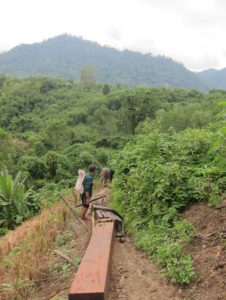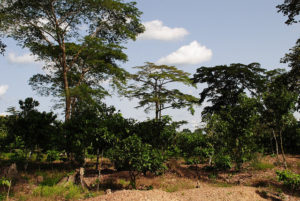
The recent paper China’s fight to halt tree cover loss carefully avoided the word ‘forest’ in its title.
It challenged the various definitions of forest that may cause more confusion than necessary, and preferred the more objectively observable ‘tree cover’ term for discussing what types of changes are occurring in China and whether or not the investments made by the state are delivering the services society wants.
In the paper, CGIAR Research Program on Forests, Trees and Agroforestry (FTA) researchers showed that China’s forest cover gains remain highly dependent on definition.
This leads to a thought experiment – please give it a try for the next five minutes: Can we do without the word ‘forest’ and its derivatives (deforestation, reforestation, afforestation, agroforestry, agroforestation)?
Let’s try. No, not a world without trees, of course. It is hard to think of landscapes completely without perennial woody stemmed plants – although they may be short and sparse in harsh climates, belong to a wide range of plant families, including ferns, conifers, dicotyledons and grasses, restricted to the edges of fields, lining roads, isolated remnants of a formerly denser vegetation retained to provide shade, or planted to create a more pleasant environment around houses and in urban areas.
No, not a world without “old growth”, “young growth”, “jungle rubber”, “home gardens”, “timber plantation”, “tree crops”, “line plantings” and vegetation derived from “old growth” by various degrees of logging and currently recovering.
Not a world, however, where we lump part of these land covers, and exclude others from a black-versus-white terminology, without words for the greys in between.
It could be a world where all land covers without or with trees are described by terms that are precise and clear. The amount, type, age and size of trees and other flora and fauna that shape land cover are directly related to its ‘use’, the ecosystem services and benefits provided to humans (and to those who attribute a right to non-human inhabitants of this planet).
Read also: New look at satellite data quantifies scale of China’s afforestation success
Trees produce wood of a wide range of qualities and utilities, fruits, resins, nectar for honeybees, medicinals and other tradable goods. Trees interact with water in the full hydrological cycle of atmospheric moisture, clouds, rainfall, runoff, groundwater recharge and regulated river flow.
Trees have major influence on micro- and meso-climates, and some role in the global carbon balance (no there is no shortage of atmospheric oxygen, so they don’t solve problems here). Trees represent a pretty good cross section of plant families, and support a huge diversity of beetles, other insects, birds and beasts.

Some forms of tree cover are better in some of these functions, others in other. It is not easy to draw a single line in deciding on a dichotomous two-stage land cover classification. It makes more sense to have many more categories, be clear on what tree functions are needed where and take measures to promote these.
Is it hard to describe all this without using the f-word? It does take some effort, but it may be liberating after the initial shock. Our data show that rates of change (‘deforestation’) in the landscapes where we work strongly depend on the operational forest definition, making the term as such meaningless.
Currently fashionable claims to ‘deforestation-free’ value chains have no substance in the absence of clarity of the basic terms used.
All well and good, but who should control and regulate the land where trees are supposed to grow and thrive? Don’t we need foresters, forest policy, forestry laws, forestry departments, forestry science, a global forest agreement, forest accounting rules and forest law enforcement? Depending on the specific type of tree cover and the primary functions to society, the answer to these questions will differ.
We certainly need land use laws and policies, land governance agencies, land use and landscape science, and clarity in how all land cover types can contribute to various parts of the Sustainable Development Goals agenda. But maybe, the agriculture vs forest dichotomy on which current concepts are built is actually not helpful, and we better go to the next level of distinctions between the various types and function of partial and complete tree cover in our landscapes.
FTA was explicitly set up to deal with the whole continuum of land cover and land use types, without prejudice to any specific interpretation of what it and what is not included in ‘forest’ or ‘agroforestry’ as separate categories. Indeed, the trees are bridging a wide spectrum of land uses.
By Meine van Noordwijk, FTA senior scientist, originally published at ICRAF’s Agroforestry World.
This work forms part of the CGIAR Research Program on Forests, Trees and Agroforestry.
We would like to thank all donors who supported this work through their contributions to the CGIAR Fund.











